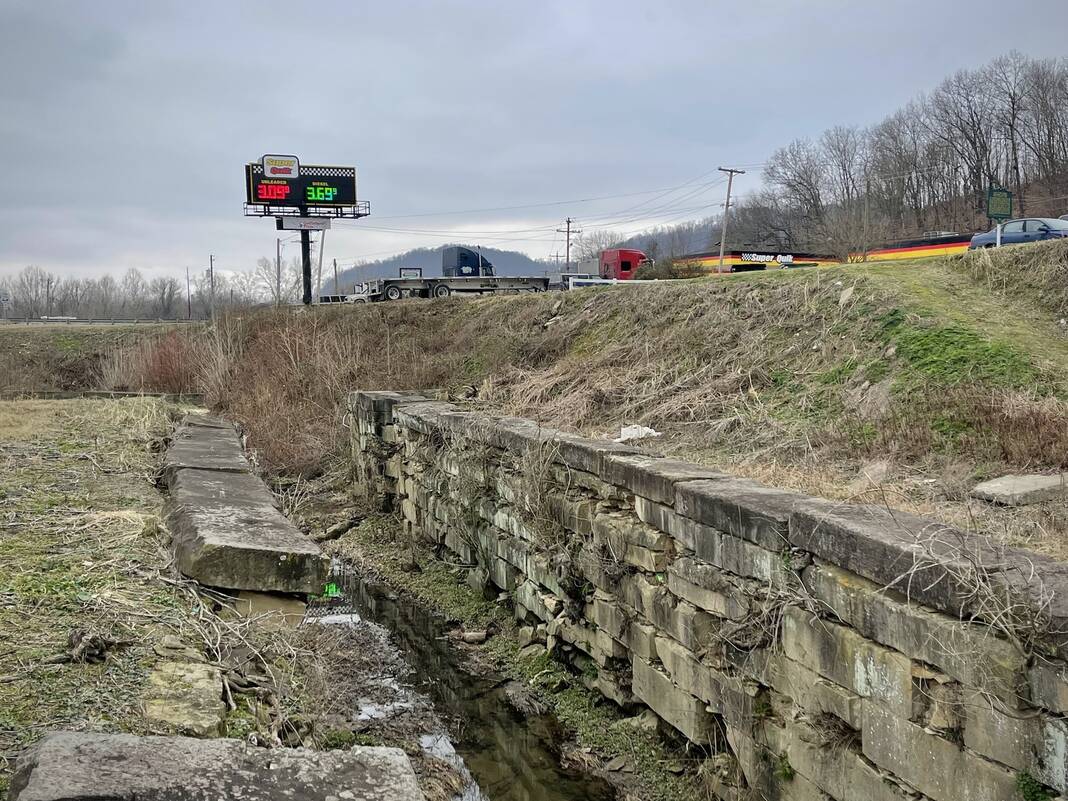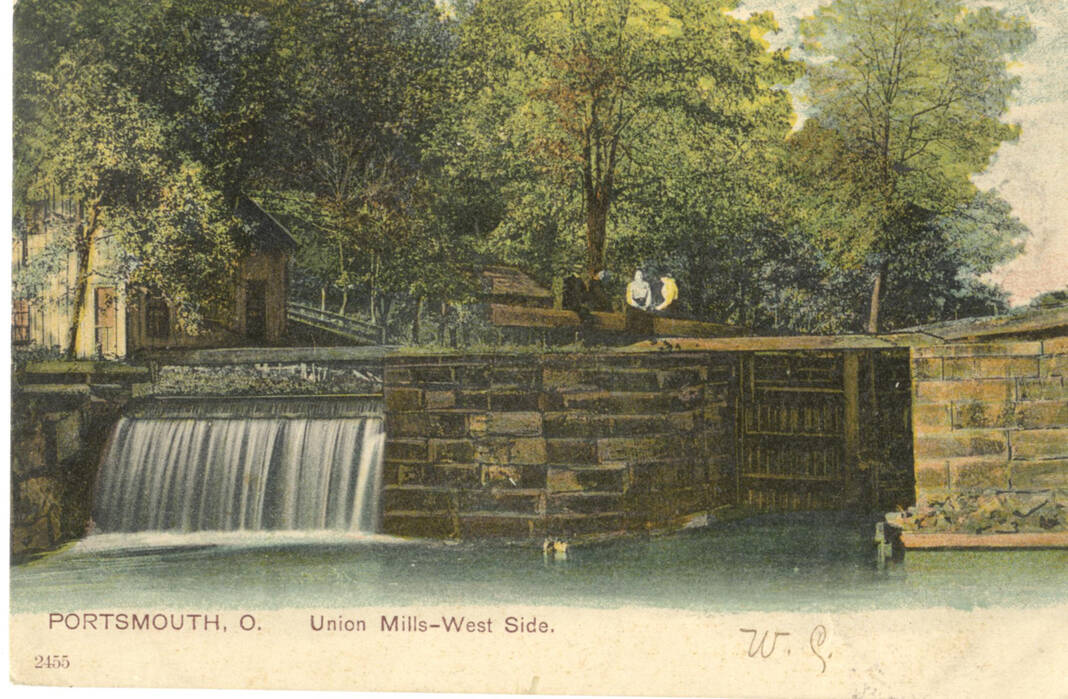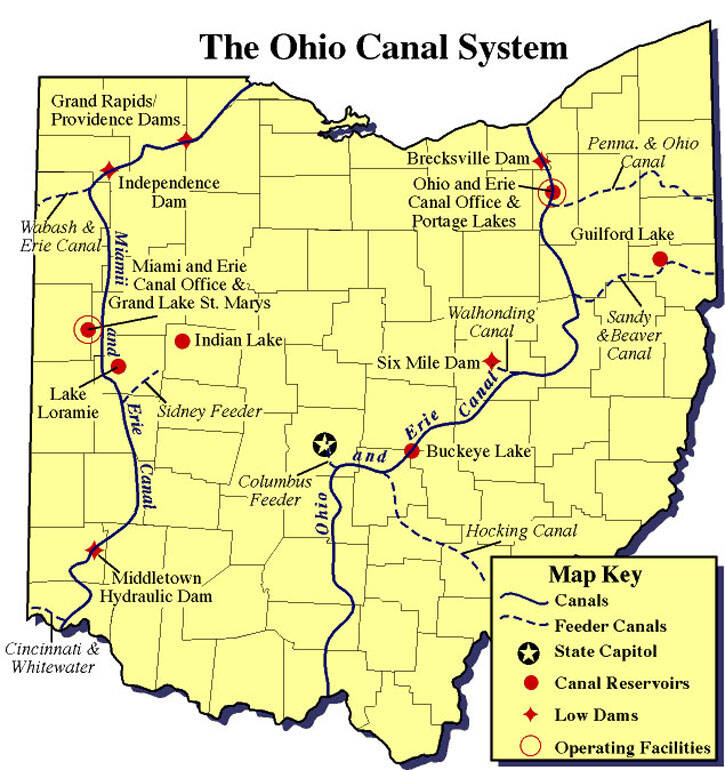
The Ohio-Erie Canal Lock 50 at Union Mills past and present.
Drew Feight/SciotoHistorical.org

The Ohio-Erie Canal Lock 50 at Union Mills past and present.
Drew Feight/SciotoHistorical.org

Map of the State Canal System
Drew Feight/SciotoHistorical.org
WEST PORTSMOUTH- Long before electric cars and airplanes and even railroads, there was the Ohio-Erie Canal. It was a massive project of engineering and manpower that began in the 19th century and ensured Ohio would have a place in the modern world by moving cargo and people quickly.
“It was like going to the moon,” said Larry Mullins, who is part of a group working to restore Lock 50 at Union Mills. The Scioto Scenic Heritage Trail committee has been awarded a grant aimed at restoring Ohio Erie Canal Lock 50 near Union Mills.
The canal system brokered Ohio’s way into the global marketplace not so long after the war that created the United States. It was made up of waterways that saw narrow boats pulled by mules and horses traversing canals filled with freshwater. Locks would allow the water to be lowered gradually to the level of the Ohio River, which was a highway to the rest of the nation.
“Then, you could actually make a product, put it on the canal and ship it out all the way to the Atlantic Ocean,” Mullins said. “It really put Ohio on the map.
“Before canals came to Ohio, it was like the wild, wild west. People were growing and making stuff, but they couldn’t get it anywhere.”
The canals were dug with pickaxes and shovels and wheelbarrows and the brute strength of humans and animals.
“It was one of those huge advances the state undertook and it always makes me marvel that Ohio didn’t become a state until 1803,” said Bill Tipton, who is also part of the Scioto Scenic Heritage Trail committee.
By 1805, the canal project had begun. Traces of it remain throughout Ohio, including Lock 50 at Union Mills, which was the last one built as railroads had begun to make the canals obsolete.
“It wasn’t a perfect system, but it worked and it caused Ohio to develop beyond the banks of the Ohio River and Scioto River,” Tipton said.
By the end of the 1850s, the canals were all but useless in southern Ohio. The flood of 1888 spelled the end. In fact, the flooding of the Ohio and Scioto rivers is why there are so few accessible and preserved locks in the area, while some canals and locks in northern Ohio are still utilized for tourism and recreation.
But the historical significance of the canal system is worth preserving and passing to future generations. That’s why the group applied for and received a grant to preserve the lock at Union Mills.
“We applied through the Ohio Department of Transportation for a Transportation Alternative Program grant and that’s used for a lot of different things, but part of it is the restoration and saving of transportation modes of gone-by years,” Mullins said. “We can actually start spending money on July 1, 2024.”
The grant is for $258,000, of which 90 percent will come from the TAP grant; the local share would be $25,000. It will be used to preserve Lock 50. In doing so, it will also provide another landmark for locals and tourists alike to enjoy.
In eight years, Lock 50 will see its 200th year. The group hopes to have the preservation work done by then. As for the future beyond, they want to develop a park to spur interest in how the canal system’s past has helped create
“In eight years it’ll be 200 years old,” Tipton said. “Two hundred years ago, where were we as a state? As a nation?”

